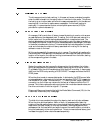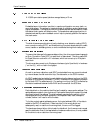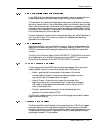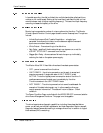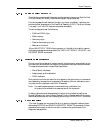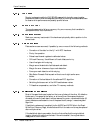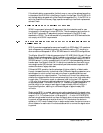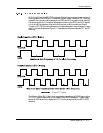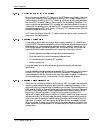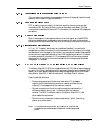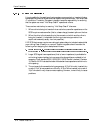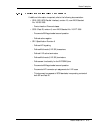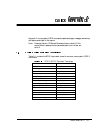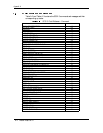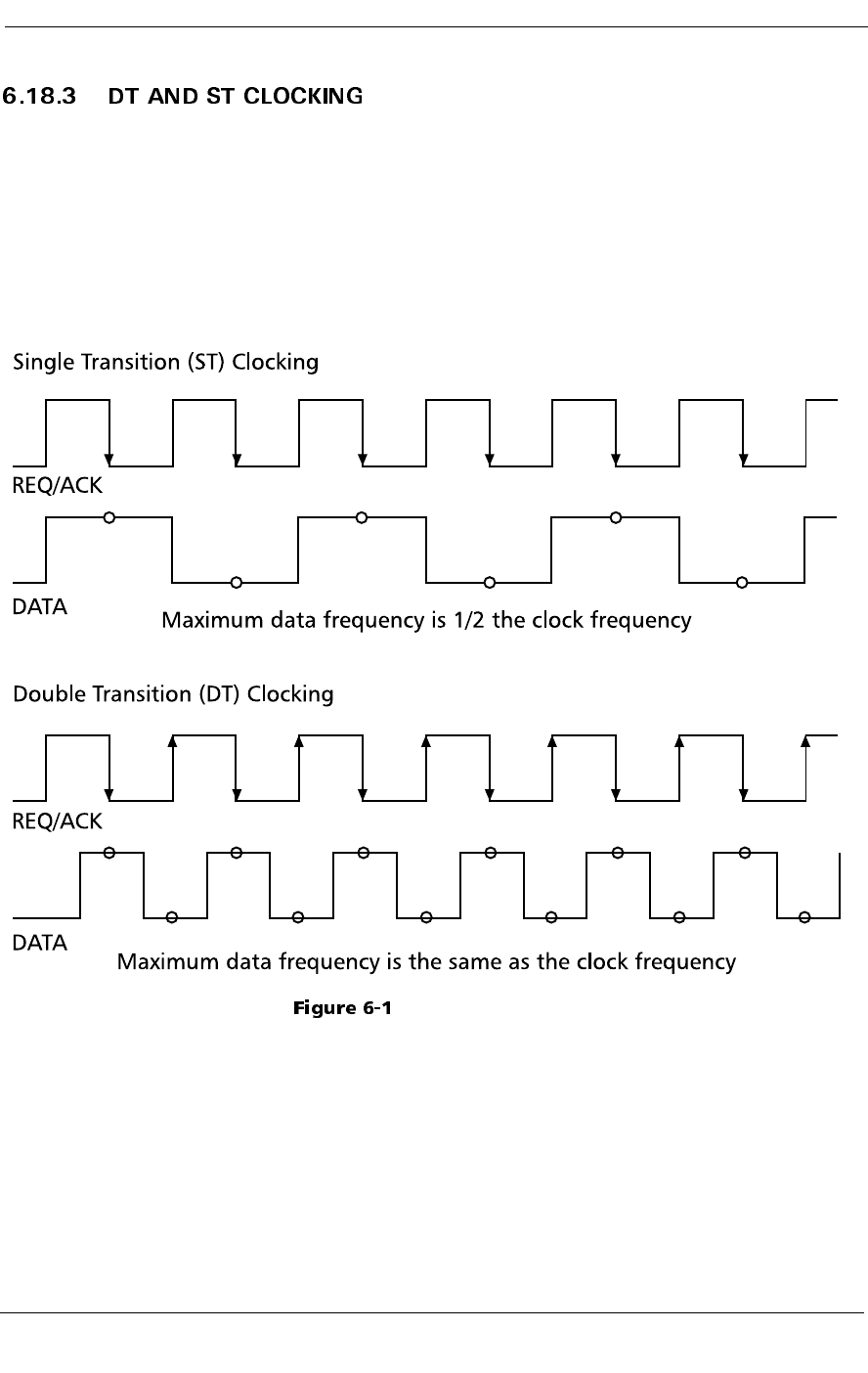
Feature Descriptions
Maxtor Atlas 10K III 6-11
With Ultra160 and Ulra320 SCSI interfaces, Maxtor has introduced a new method of
clocking data on the SCSI bus. This method, called Double Transition (DT) clocking,
uses both the rising and falling edges of the REQ and ACK signals to clock data into
the receiving device. This has the advantage of allowing the REQ and ACK signals
to run at half the frequency that would be required under the traditional Single
Transition (ST) SCSI clocking scheme for the same data rate. Lower frequency clocks
result in a more reliable bus. Figure 6-1 illustrates the difference between DT and ST
clocking.
ST and DT CLocking
The Maxtor Atlas 10K III disk drive can operate at speeds up to 80 MB/sec in either
ST or DT modes, depending on the capabilities of the host adapter. Transfer rates
above 80 MB/sec are only supported in DT mode, as required by the SPI-3 SCSI
standard.



